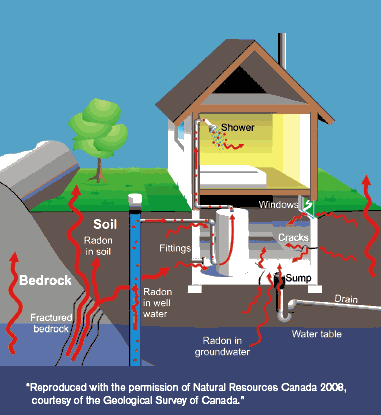United States EPA
Is radon really bad for you?
Breathing radon over time increases your risk of lung cancer. Radon is the second leading cause of lung cancer in the United States. Nationally, the EPA estimates that about 21,000 people die each year from radon-related lung cancer. Only smoking causes more lung cancer deaths.
The USA EPA has established the radon level of 4.0 picocuries per liter to be the action degree for radon gas in homes. Definition, take action to lower radon degrees that are more than four picocuries per litre. Bear in mind that radon threat complies with a direct curve of the time vs the quantity revealed to it plus the extra aspect that each person may be essentially susceptible to radon related cancer.

Only regarding 20% of all institutions nationwide have done testing, although the EPA suggests that every college be examined. These numbers are perhaps low enough to guarantee security of the majority of youngsters from raised radon exposures. For exposure criteria to be efficient, they should be established for those most at risk. The main path of direct exposure to radon as well as its progeny is inhalation.
Is radon mitigation really necessary?
When radon gas enters the body, it exposes the lungs to small amounts of radiation. In small quantities, experts say this is harmless. However, in persistent exposures or larger quantities, radon can damage the cells of the lining of the lungs, increasing a person's chance of developing lung cancer.
This does not indicate that a level listed below 4.0 pCi/L is taken into consideration appropriate, as mentioned in the BEIR VI research study. It is approximated that a decrease of radon degrees to below 2 pCi/L nationwide would likely reduce the yearly lung cancer cells deaths credited to radon by 50%. Nonetheless, even with an activity degree of 2.0 pCi/L, the cancer danger presented by radon gas is still numerous times higher than the threats enabled health hazards in our food and water.
- Lung cancer danger rises 16% per 2.7 pCi/L increase in radon exposure.
- Radon gas is a naturally-occurring byproduct of the radioactive decay of Uranium in the dirt.
- Depending upon your geographical area, the radon levels of the air you breathe beyond your residence might be as high as 0.75 pCi/L.
- The nationwide standard of outside radon degrees is 0.4 pCi/L as well as it is estimated by the National Academy of Sciences that outside radon levels trigger approximately 800 of the 21,000 radon induced lung cancer fatalities in the United States each year.
- The US EPA has put it plainly, stating, "Any radon exposure has some risk of triggering lung cancer cells.
How do you eliminate radon?
Possible symptoms include shortness of breath (difficulty breathing), a new or worsening cough, pain or tightness in the chest, hoarseness, or trouble swallowing. If you smoke and you know you've been exposed to high levels of radon, it's very important to quit smoking.
The EPA advises doing a 2nd test to verify the preliminary searchings for if the test results indicate radon degrees at or over 4 pCi/L (picocuries per liter). If the standard of the two short-term radon tests is 4 pCi/L or better, property owners can take actions to minimize the radon concentration. The EPA keeps in mind that given that there is no safe level of radon gas direct exposure, reducing radon to below 2 pCi/L likewise helps reduce the number of radon-related lung cancers cells. Breathe sufficient radon over the years, and it can boost your danger of lung cancer.
What to Know About the Risks of Radon Gas in your house
What are the symptoms of radon in your home?
If a person RadoN1 has been exposed to radon, 75 percent of the radon progeny in lungs will become "harmless" lead particles after 44 years. When an alpha particle damages a cell to make it cancerous, the onset of lung cancer takes a minimum of 5 years but most often 15 to 25 years, and even longer.
Nevertheless, you choose what you consume, whether or not you smoke, and also just how and when you drive. A cost-effective as well as easy radon test can offer you the info you require to make an enlightened decision regarding what level of radon gas direct exposure serves to you. While any kind of amount of exposure to radon gas constitutes a health and wellness risk, your dangers of having lung cancer cells reduction dramatically as radon levels reduce.
How long does it take for radon to cause cancer?
Fact: You will reduce your risk of lung cancer when you reduce radon levels, even if you've lived with an elevated radon level for a long time. Keep in mind that radon levels below 4 pCi/L still pose some risk and that radon levels can be reduced to 2 pCi/L or below in most homes.